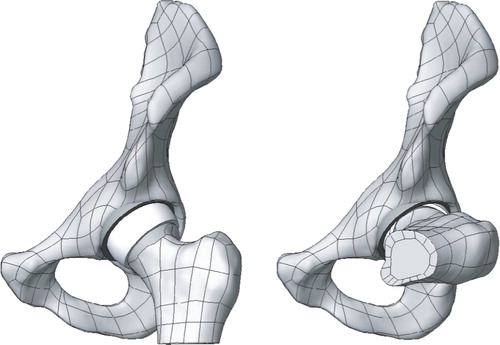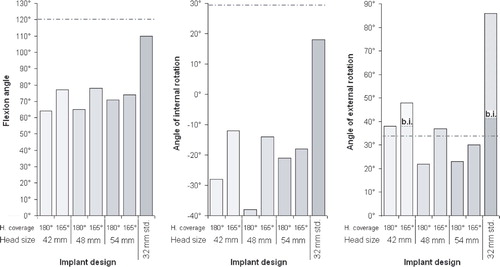Figures & data
Table 1. Variations in hip resurfacing design features, pre- and postoperative head-neck ratio, and postoperative femoral offset
Figure 2. Anterolateral view of the CAD model of a 48-mm hip resurfacing reduced by 5%. The femoral offset implant with 165° head coverage in situ, with a cup position of 45° inclina-rose with the patient's femoral tion and 15° anteversion. Left: starting position for flexion movement with a head size. The diagrams in Figure straight leg. Right: end position with an anterior impingement of femoral neck at the acetabular component (flexion angle: 77°).

Table 2. Implant positions analyzed
Figure 3. Overview of range of motion of all implant designs analyzed in 45° inclination and 15° anteversion of the cup. Left: maximum flexion. Middle: maximum internal rotation at 90° flexion, starting from 40° external rotation. Right: maximum external rotation in 15° adduction and 10° extension (b.i.: bony impingement). The dashed line marks physiological ROM (Genoud et al. Citation2000, Tannast et al. Citation2007).

Table 3. Maximum flexion angles of all implant designs analyzed in all implant positions simulated
Table 4. Maximum ROM for internal rotation at 90° flexion of all implant designs analyzed in all implant positions simulated
Table 5. Maximum ROM for external rotation at 15° adduction and 10° extension for all implant designs analyzed in all implant positions simulated. Where bony impingement occurred before prosthetic impingement, the theoretical values for prosthetic impingement are shown in parentheses
